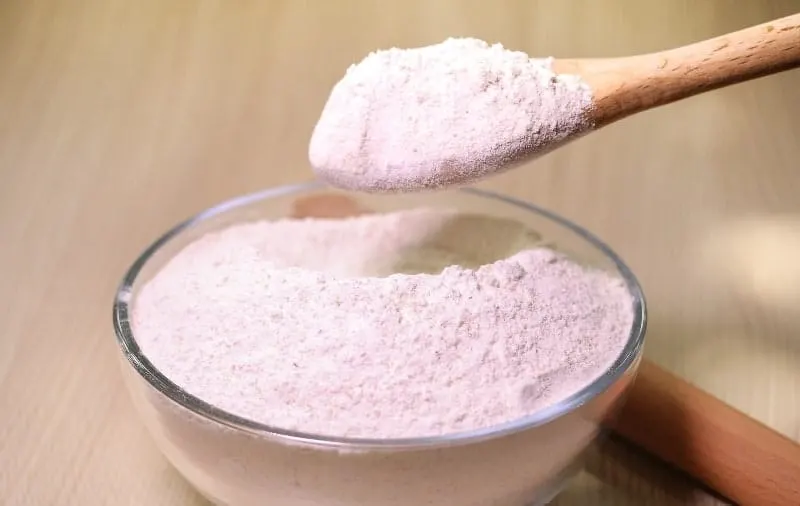Sifting flour is a useful habit to get into if you’re making certain baked goods like cake or brownies, but it’s pointless in some other applications.
I was making bread recently and a strange thought popped into my head. I wondered whether sifting the flour before combining it with other ingredients would have any kind of effect on the finished product.
With that thought stuck in my mind, I decided to do some research and a little test of my own.
I made two batches of dough. One batch had normal flour and the other had sifted flour. Both were the same weight.
What were the differences? There weren’t any.
Both loaves of bread were near enough exactly the same. The only thing I noticed was that the sifted flour absorbed the water more easily.
So, is there any reason to sift flour before making bread?
Sifting flour isn’t necessary when making bread. Flour is sifted to incorporate more air into a mixture, but bread is risen by the CO2 that’s produced by the yeast and any air added at the start will be pushed out when kneading. You may want to sift flour if it contains certain impurities or bran.
The point of sifting is the aerate, separate, and soften the flour so it can be more easily mixed in with other ingredients.
With a lot of baked goods, you want to mix all the flour (and other dry ingredients) with the liquid until it’s just barely combined. By using sifted flour, these ingredients will require less mixing to combine and therefore leave you with a better result.
When thinking about sifting flour for bread, it doesn’t make a whole lot of sense. You’re going to be thoroughly combining the wet and dry ingredients through the process of kneading, so you don’t need to worry about aerating it.
When To Sift Flour For Dough
Although sifting doesn’t necessarily help you make better bread, there are some circumstances that you need to consider doing it.
Flour that you’ve had for a while may have gotten to a point where it’s lower in quality and isn’t in the best condition to use. Of course, this depends on how you’ve stored it and what quality it was when you bought it, but here are some reasons you might need to sift it before use.
Impurities
Some flours can have certain impurities that are able to be separated through sifting. These impurities may affect the rise or texture of your bread, so it’s likely that you’ll want to remove them.
Flour can also be infested by bugs like flour mites and weevils, which are a nasty surprise when you first notice them. Although you’ll likely want to throw the flour out after seeing them, you can sift the mites out of the flour before using it. Just keep in mind that this won’t remove all the eggs.
Flour bugs aren’t harmful to eat and don’t affect your bread, so it’s up to you what you do if you’ve got them.
Lumpy Flour
When flour has been left exposed to a moist environment, it can start to absorb some of the moisture in the air and form clumps. These clumps can cause some annoying problems as they often don’t break up properly when being mixed.
If your flour has some lumps in it, simply sift it all and put it back in the container. This way you can be sure that you won’t have to struggle with awkward lumps and it’ll be ready to use next time.
Unwanted Bran
If you’re wanting to make bread out of flour that contains bran, you’ll likely get a better rise if you sift out at least some of the bran.
The bran interferes with gluten development and prevents a great rise in the bread. Without the bran, you’re able to build a much stronger gluten network and therefore allow it to rise much better.
Pass the flour through a fine-mesh sieve and you’ll notice that larger pieces haven’t gone through it completely.
This is removing some of the fiber from the flour, but you can still use it. Simply put it to the side whilst making your dough. Continue to make the dough as normal but coat the shaped dough in the bran before proofing and baking.

